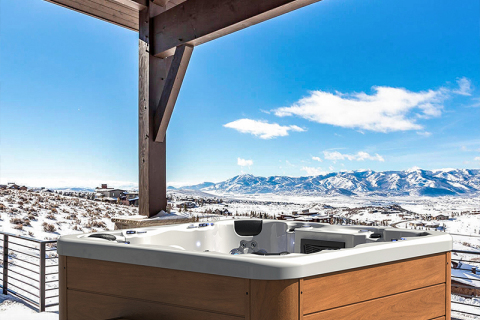
- Home
- >
News
Acrylic spa hot tubs can indeed yellow under adverse operating conditions, improper cleaning and maintenance, or due to material aging. Causes include material aging, mineral deposits in the water, UV exposure, and improper cleaning. However, acrylic, as a relatively stable thermoplastic material, retains its color well under normal use.
Advantages of acrylic spa hot tubs: 1. Lightweight and easy to install 2. Excellent thermal insulation 3. Smooth and comfortable surface 4. Attractive appearance and strong plasticity 5. Easy to clean and maintain 6. Reasonable cost and high cost-effectiveness Disadvantages of Acrylic Spa Hot Tubs: 1. Surface easily scratched 2. Limited high-temperature resistance 3. Susceptible to aging and discoloration 4. Less load-bearing than heavier materials 5. Limited environmental friendliness and recyclability
Acrylic spa hot tubs have some resistance to staining, but their hardness and stain resistance are not as good as those of ceramic or enamel products. Therefore, if improperly cared for, they can easily stain under certain conditions.
1. Under standard operating conditions, high-quality acrylic spa hot tubs generally will not experience structural failure within 10 years; 2. Mid-range products may develop cracks or structural fatigue after 5 to 8 years; 3. If improperly installed or used, low-end tubs may break after 3 to 5 years; 4. Proper maintenance and repair can delay breakage by at least 3 to 5 years.
It is important to emphasize that as long as the user takes appropriate precautions such as freeze protection, drainage, and insulation, acrylic spa hot tubs can be used safely in cold environments. Therefore, the key isn't whether the acrylic spa hot tub itself is "cold-proof," but rather whether the user possesses the correct operating and maintenance procedures.
Neutral Cleaner (pH approximately 7) This is the preferred type of cleaner recommended for acrylic spa hot tubs. It is gentle, non-corrosive, and provides optimal surface protection. Common ingredients include mild surfactants, citric acid, and plant extracts.
There are many types of outdoor hot tubs on the market, including acrylic, fiberglass, stainless steel, cast iron, wood, natural stone, concrete, artificial stone, etc. Among them, acrylic spa hot tubs occupy a wide share in the high-end and mid-end markets.







